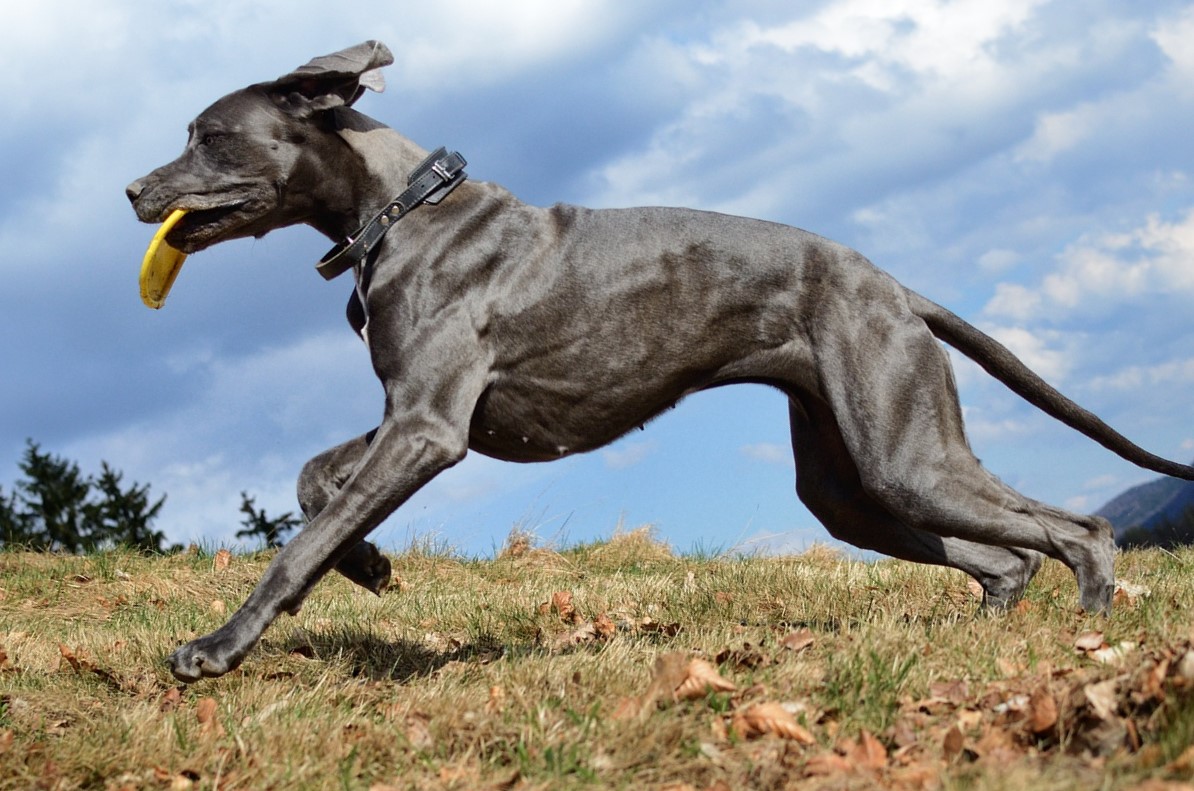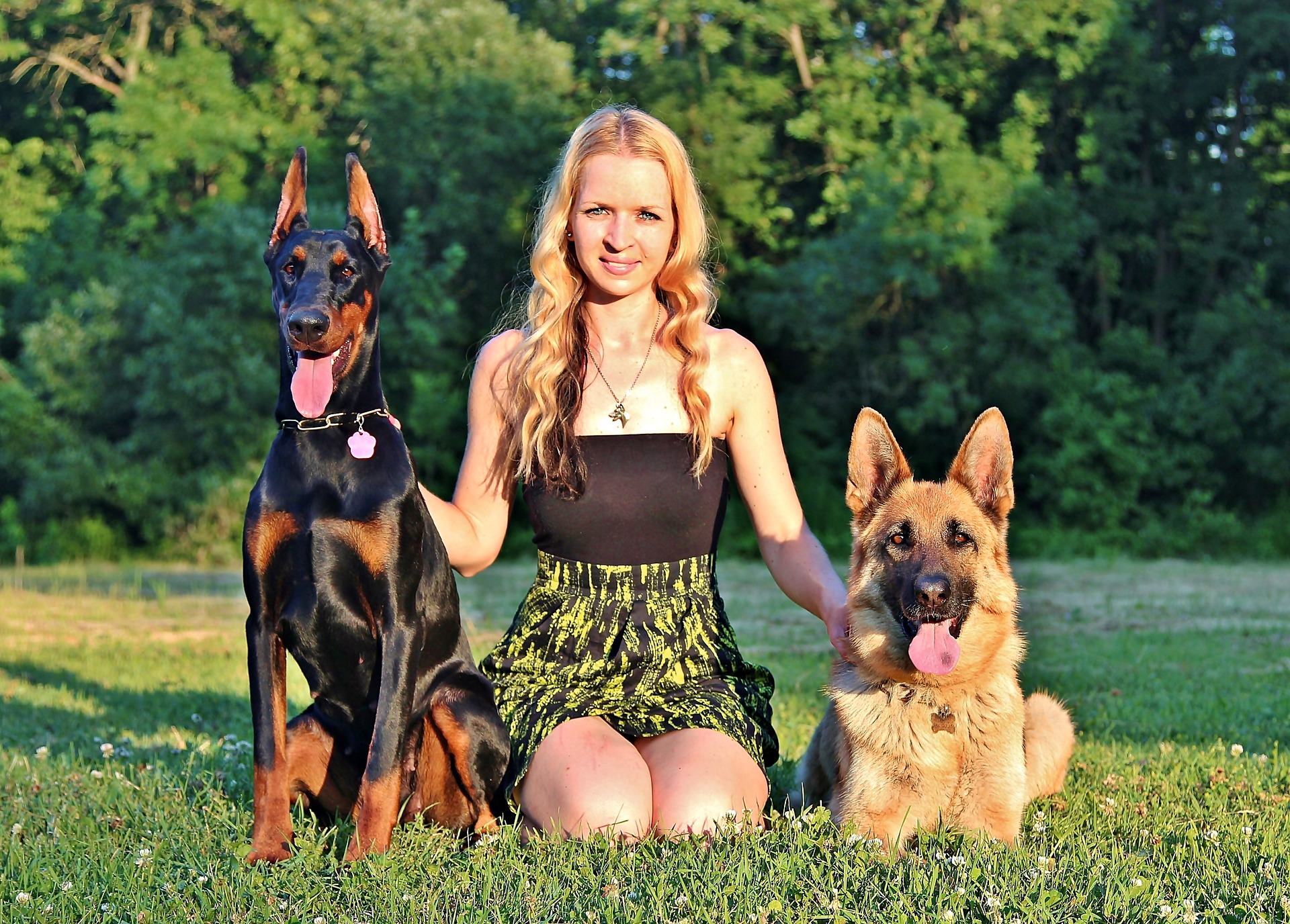Dr. Phil Zeltzman’s Blog
What causes bloat?
“Bloat” is also called many different things: twisted stomach, Gastric Dilatation Volvulus (GDV), gastric torsion, stomach torsion etc.

Side note: it’s unfortunate that we (vets and dog owners) have gotten used to calling it bloat. After all, bloating is not a big deal in people. Yet “bloat” can kill a dog in a matter of hours.

Vets sometimes tell pet owners that we don’t really know what causes GDV, and therefore we don’t know how to prevent it. However, that is not exactly accurate…
Here is a summary of the main known causes.
1. Breed
Large and giant dog breeds are at risk for GDV, including Great Danes (the #1 breed), German shepherds, Weimaraners, St. Bernards, Dobemans and Old English sheepdogs. These breeds are roughly 25% more likely to get GDV than others.
A few smaller breeds, such as basset hounds, boxers, and standard poodles can also be prone to GDV.
2. Conformation
Conformation has to do with the shape of a dog.
Dog breeds called “deep-chested,” have a tall chest and a skinny belly. Think of a Great Dane. A deep chest, combined with stretching of ligaments that attach to the stomach, increases the chance of stomach torsion.

3. Genetics
Dogs with a first-degree relative who had GDV are at greater risk of getting
it themselves. This chance increases by 20% with each additional year. These factors confirm that GDV is a partially genetic disease and dogs at risk should be spayed or neutered.
In addition, better selection should be taken seriously by breeders.
4. Stress
Stressful situations can also contribute to a twisted stomach. Boarding, thunderstorms, moving, vet visits and hospitalization are all potential triggers for nervous dogs.
One study showed that having a high-stress environment or being fearful contributed to GDV compared to similar dogs who were in a non-stressful environment.
5. Feeding
Eating fast, and how often dogs are fed, have been shown to increase the risk of stomach torsion.
Therefore, if your dog eats fast, it’s important to find ways to slow it down. There are special bowls made for that purpose.
In addition, dogs fed once per day are more likely to have GDV, compared to dogs who are fed 3 times daily. Several small meals throughout the day are better for dogs at risk.
6. Food
Believe it or not, studies have shown that moistening dry dog food before feeding actually increases the risk of GDV in large-breed dogs.
Ironically, feeding a dry-only diet has also been shown to increase risk.
So what’s a concerned dog owner to do?
Recommendations have been made to help prevent a first episode by avoiding exclusively dry, expanded, cereal-based, or soy protein-based commercial dog foods.
Feeding a combination of dry and canned food together may be a way to lower the chances of GDV. I insist: “may be a way.” There are no guarantees here, only ways to try to lower the chances.
Also, foods with fat listed among the main 4 ingredients have been shown to increase the risk of GDV. So please look at the list of ingredients on your dog food.

7. Water
It is recommended to avoid drinking large amounts of water before and after exercise.
Ironically, too little water before and during meals may increase the chance of a dog suffering from GDV! A recurring “hot story” about ice water causing GDV regularly shows up online and appears to be a complete hoax.
8. Exercise
A fairly classic recommendation to reduce the risk of stomach torsion is to avoid heavy exercise 1 hour before and 2 hours after eating a meal. The idea is that it’s easier for a stomach to twist when it’s full compared to when it’s (partially) empty.
9. Age
Even though I always say, “age is not a disease,” age can play a role in a dog’s risk for stomach torsion.
In Great Danes specifically, age is a very important risk factor for GDV.
One of the reasons may be the stretched ligaments, over time, as mentioned above.
10. Other risk factors
There are countless other risk factors that are unproven, controversial, or contradicting.
. For example, some studies show that a raised bowl is better to decrease aerophagia (aka swallowing air), while others imply a bowl on the floor is ideal.
. The at-risk gender varies from study to study.
. The month, the cycle of the moon, and a previous spleen removal are also fuzzy risk factors.
- Gastropexy
This last point is not a risk factor – on the opposite, but it’s important to mention here.
A gastropexy, or tacking the stomach to the inside of the belly, is a simple surgery that can prevent twisting of the stomach. In good hands, it’s successful over 95% of the time.
Importantly, it prevents twisting of the stomach, not true “bloating” – aka the stomach getting full of air – we don’t know how to prevent that and it remains a risk for life.

The gastropexy or “pexy” in short is part of the surgery to treat GDV. But it can also be done preventively, or prophylactically. So it’s called a prophylactic gastropexy.
For example, Great Danes have a 40 % chance of having GDV in their lifetime. Ideally, this life-saving surgery should be performed at the time of the dog’s spay or neuter – or as soon as possible after that. Of course, it’s never too late to prophylactically pexy a dog… until they have an episode of GDV.
Please beware, the next picture of a gastropexy can seem graphic to some readers.

I have helped a number of pet owners perform gastropexies over the years. Some were wise to do it before GDV happens in their at-risk dog. Some learned the hard way (i.e. their dog got a twisted stomach, and that’s how they learned about the pexy option).
Either way, it can be done as a “stand alone” surgery, or at the time of a spay or neuter.
To recap, we know a lot about the risk factors of GDV. Be aware of them, and prevent those you can control. You could very well save your dog’s life.
Phil Zeltzman, DVM, DACVS, CVJ, Fear Free Certified

Dr. Phil Zeltzman is a traveling veterinary surgeon in Pennsylvania & New Jersey. An award-winning author, he loves to share his adventures in practice along with information about vet medicine and surgery that can really help your pets. Dr. Zeltzman specializes in orthopedic, neurologic, cancer, and soft tissue surgeries for dogs, cats, and small exotics. By working with local family vets, he offers the best surgical care, safest anesthesia, and utmost pain management to all his patients. Sign up to get an email when he updates his blog, and follow him on Facebook, too!

